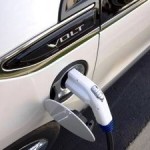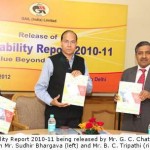
Faster rates of improvement will be needed in order to meet the goal of slashing greenhouse gas emissions from new cars by 50% by 2030 when compared with 2005 levels, according to new analysis by the International Energy Agency (IEA).
A report, titled “International Comparison of Light-Duty Vehicle Fuel Economy and Related Characteristics”, launched on December 2 by the IEA at the United Nations Climate Change Conference in Durban, South Africa, shows that while the fuel economy of cars in the EU and 21 other sampled countries did improve between 2005 and 2008, not enough progress is being made to achieve this ambitious target. The countries in the study account for about 90% of global new car sales.
The results show a 1.7% annual improvement over the three-year period, which is well below the required 2.7% improvement per year that is needed from 2005 to 2030 to halve vehicle CO2 emissions.
This target was set by (and the report sponsored by) the Global Fuel Economy Initiative (GFEI), a group of four organizations working together to promote greater vehicle fuel efficiency. The GFEI partnership is made up of the IEA, the United Nations Environment Programme (UNEP), the International Transport Forum (ITF), and the Fédération Internationale de l’Automobile (FIA) Foundation.
The target of reducing vehicle emissions by half is global, and not intended to be applied at a country-by-country level. It is expected that some countries will improve by more than 50% and others less. This reflects different starting points, market and cultural situations.
The research, undertaken by the IEA in partnership with the GFEI and with a grant from the FIA Foundation, shows that sampled non-OECD countries had a lower average fuel consumption than sampled OECD countries in 2005. In 2008, however, OECD countries became more efficient than non-OECD countries on average.
The global improvement, while shy of the GFEI target, appears to be mainly due to progress made in OECD countries, where average fuel consumption rates decreased by 2.1% per year between 2005 and 2008.
Due to the big increase in passenger cars sales in non-OECD countries, in years to come, average fuel economy of vehicles sold in these countries will substantially impact the worldwide average. The GFEI is intensively working to show emerging and developing economies the benefits of a fuel efficient vehicle fleet.
The new report highlights key areas of focus which will help countries collectively meet the 50% target in under two decades time.
The report flags three main drivers which will help countries collectively meet the 50% target in under two decades time:
- Better technologies, such as turbo-charged direct injection gasoline engines or start/stop starters
- Buying a diesel car instead of its gasoline equivalent, because of the better efficiency of the diesel engine
- Buying small vehicles, which are more fuel efficient than big vehicles
“We are working closely with countries to craft policies, as well as quantify achievement and progress made to improve their national average fuel economy,” said Lew Fulton, Head of the IEA’s Energy Technology Policy Division.
“Overall, our findings suggest that the GFEI objective is ambitious, and faster rates of improvement will be needed over the next 20 years in order to meet the 2030 target,” said François Cuenot, an Energy Analyst at the IEA. He added, “Yet, this target is within reach, and the coming years will be crucial to deploy the necessary policies necessary to attain the GFEI target.”
Source: IEA.
[Photo: IEA Senior Transport Energy Specialist Lew Fulton has led work on the report with Energy Analyst François Cuenot. © IEA]













